6,400-year-old human remains — adorned with rare ritual animal bones — unearthed
In the 1980s, archaeologists in France discovered a sprawling site filled with ancient human remains during highway construction.
Now archaeologists have finally explored and excavated the huge Neolithic site during expansion work on the highway — and they’ve unearthed 285 Neolithic structures, including dozens of burials, spanning a 4,000-year period.
Experts believe the site was in use from between about 6000 B.C. until at least 1000 B.C., according to a March 13 news release from the Institut national de recherches archéologiques préventives (INRAP).
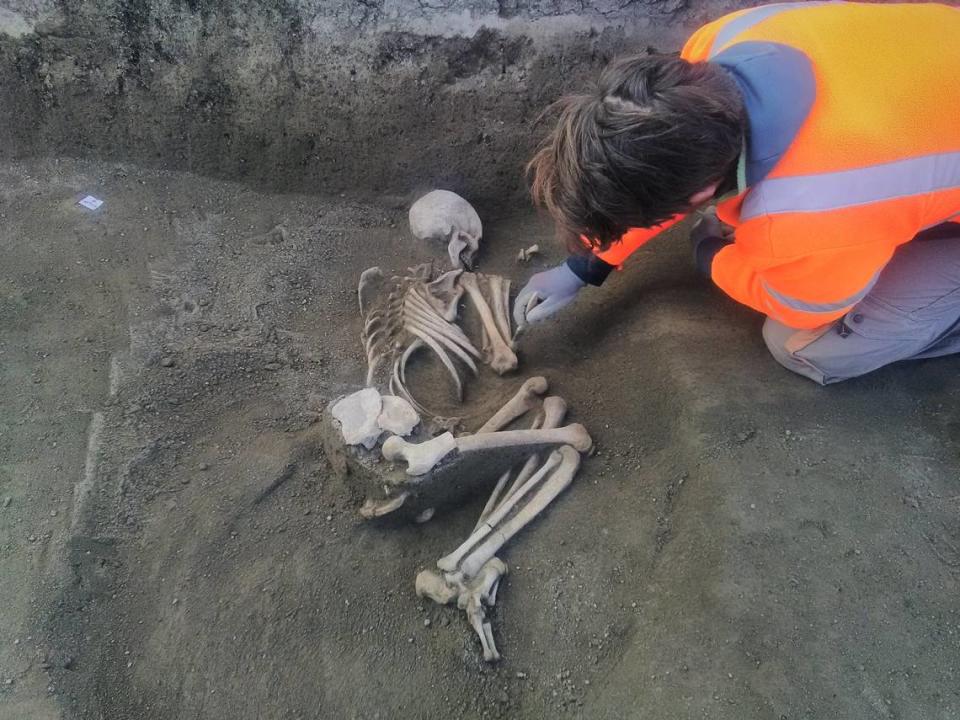
Uncover more archaeological finds
What are we learning about the past? Here are three of our most eye-catching archaeology stories from the past week.
→ Emerald green artifact 'ignored' for 80 years was 'rare' 500-year-old find
→ 2,400-year-old underground discovery stumped experts for decades — until now
→ Stone sarcophagi went unopened for 600 years — until now. See what was found inside
The oldest burial at the site is a simple pit grave dating back about 6,400 years to between 4456 B.C. and 4332 B.C., archaeologists said. The pit was covered by natural, perishable materials and filled with a collection of rare funerary offerings.
Inside the grave experts found a preserved skeleton lying on its side. The deceased had a polished deer antler fitted on its head and two long pointed deer-bone rods across its throat.
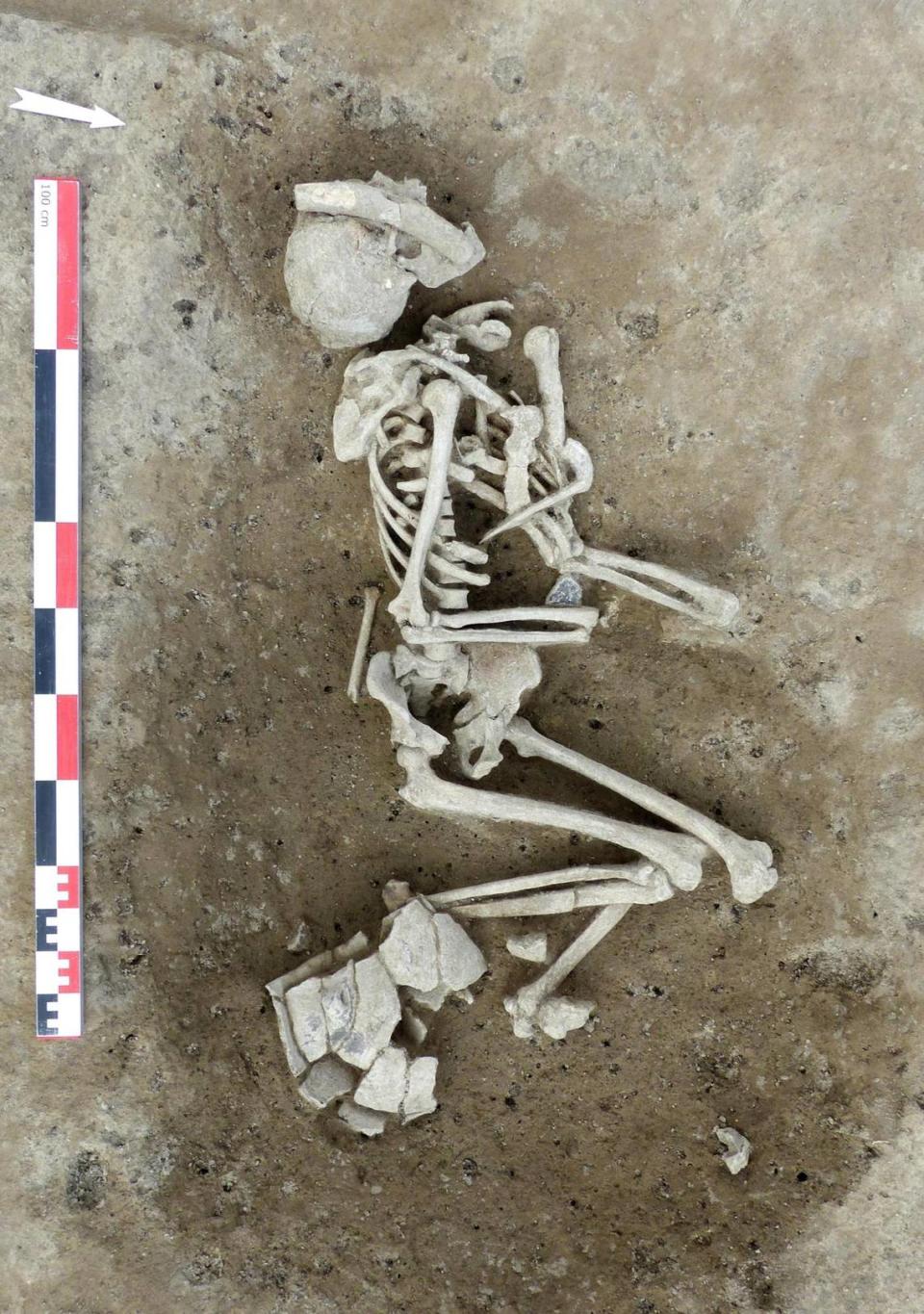
Experts aren’t entirely sure what the purpose of the antler head piece was, but they think it could have some kind of symbolic role. The rods were likely used as pins for fastening clothing.
A boar’s tusk was also found on the deceased’s left arm above the elbow, archaeologists said. The tusk is an incomplete ring, but it might have been a bracelet fastened with some kind of leather or vegetable fiber.
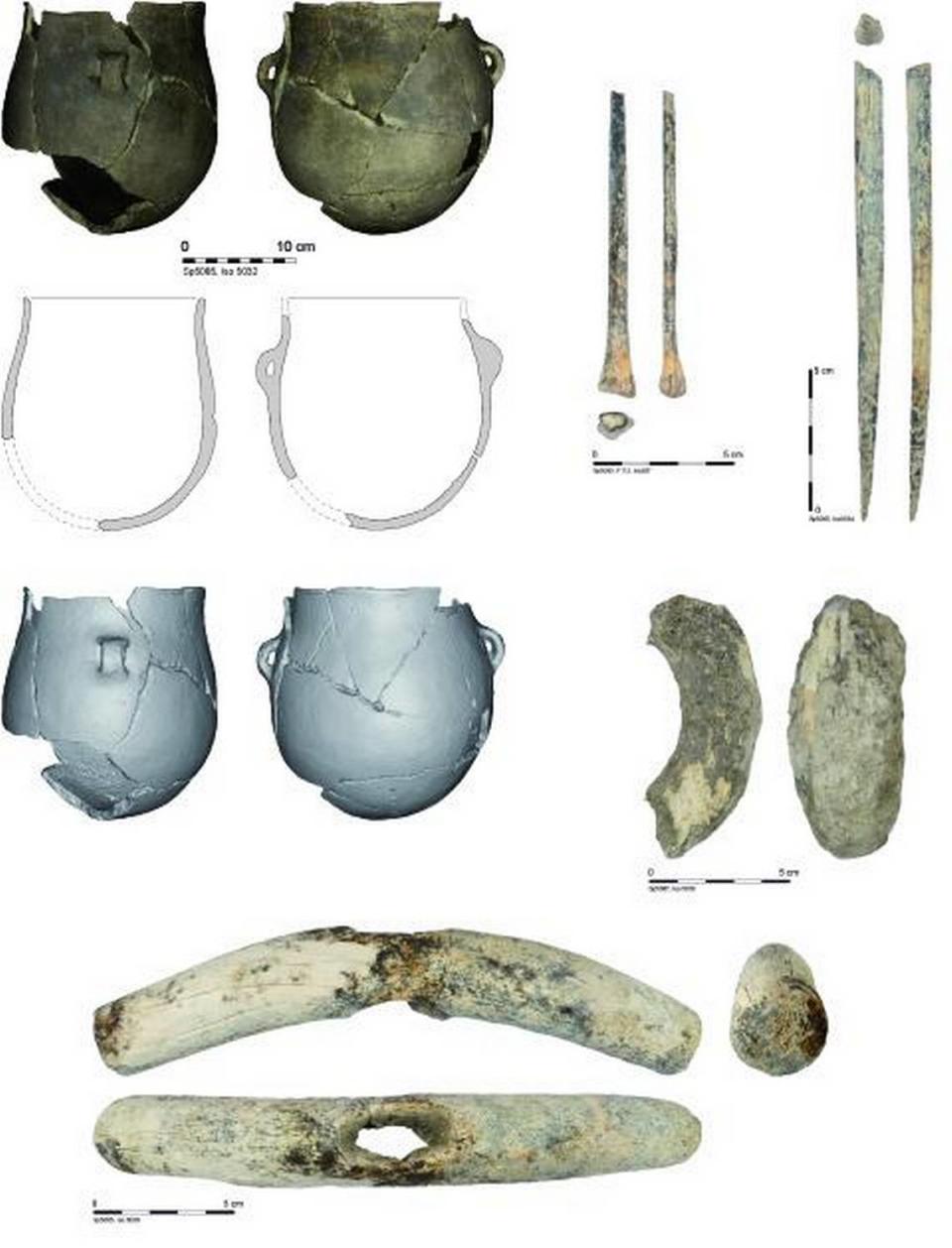
A ceramic container was found at the feet of the body. Experts said this container could have undergone some kind of sacrifice before it was buried with the deceased.
Other pit burials dating to between the middle of the fifth millennium B.C. until the start of the fourth millennium B.C., according to officials. The tombs were mostly simple with few offerings, and most individuals were placed in a folded position on their side.
Stone slab burials
Some tombs showed evidence of the integration of stone architecture during the Neolithic era, archaeologists said.
One burial dating to between 4355 B.C. and 4082 B.C. has a stone placed on its edge. Archaeologists believe the stone was placed near the deceased’s head either as a marker or to protect the head.
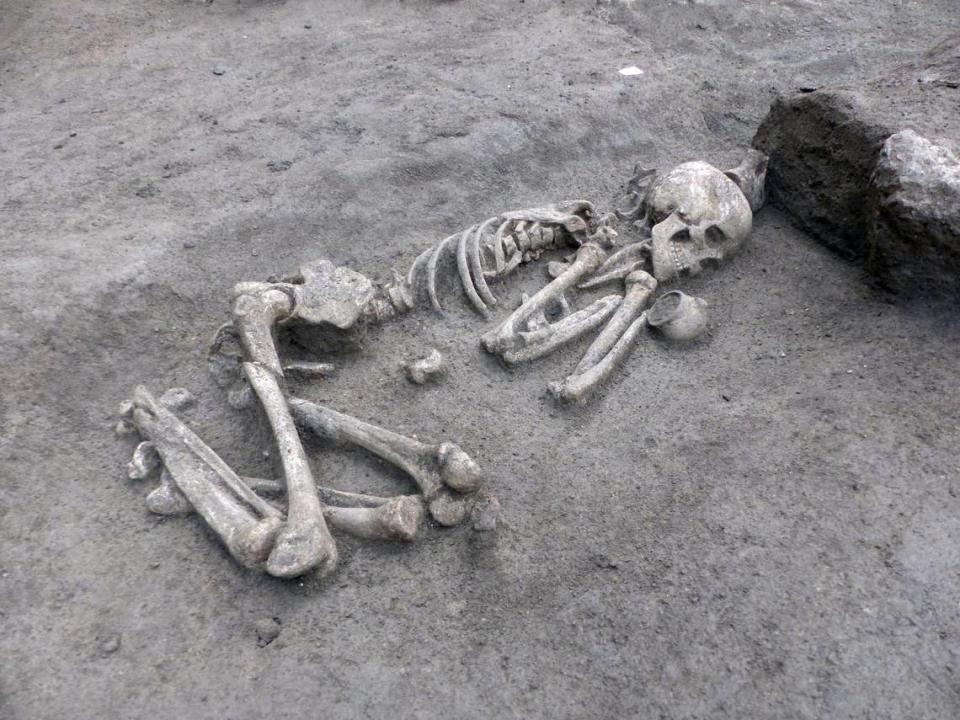
The tomb also has a small ceramic vase and a deer antler object placed near the deceased’s head.
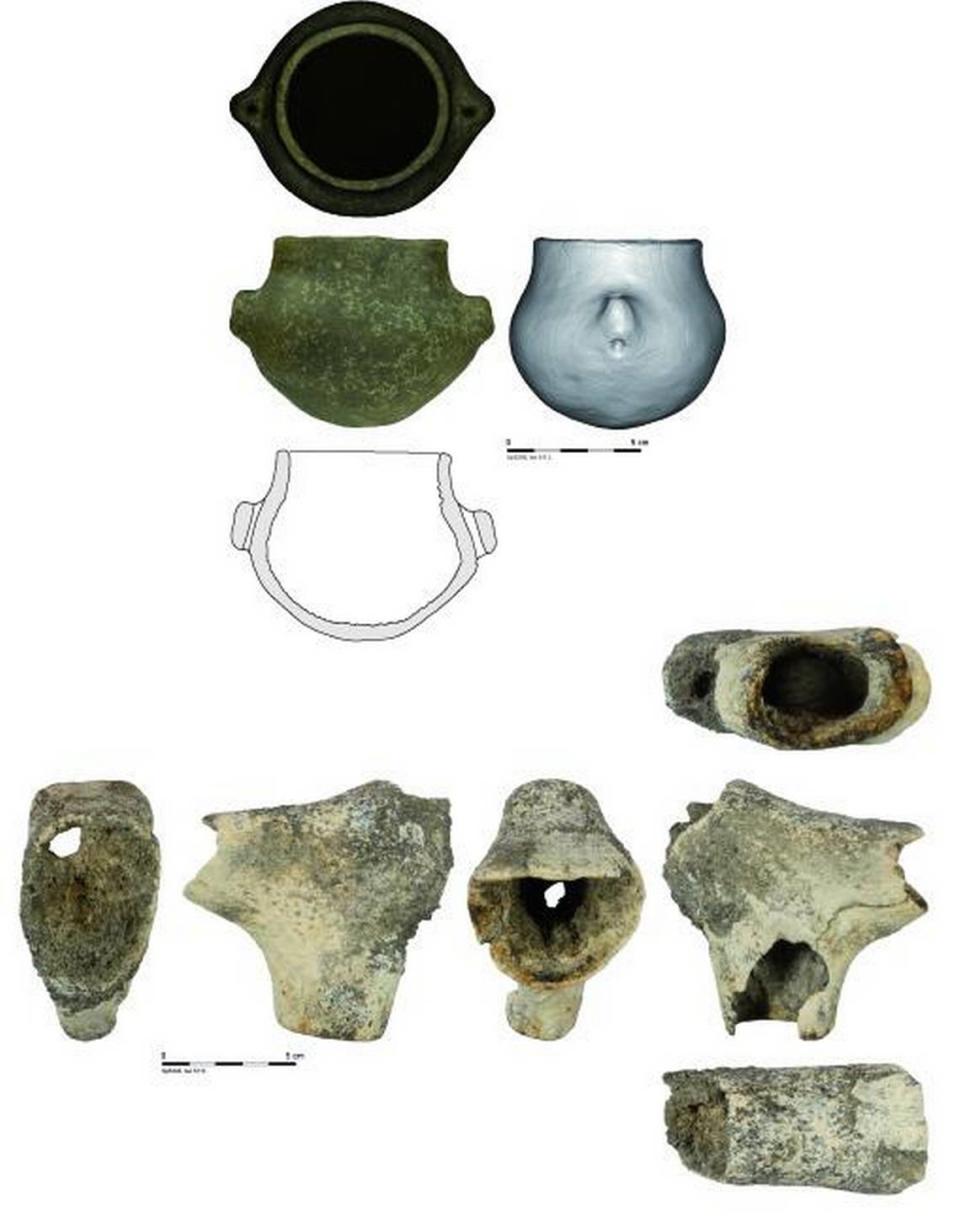
Another burial — which approximately dates to between 4337 B.C. and 4065 B.C. — consists of a wide and thick stone slab placed on two smaller slabs. Beneath the larger stone, an individual was placed on their side without any funerary goods.
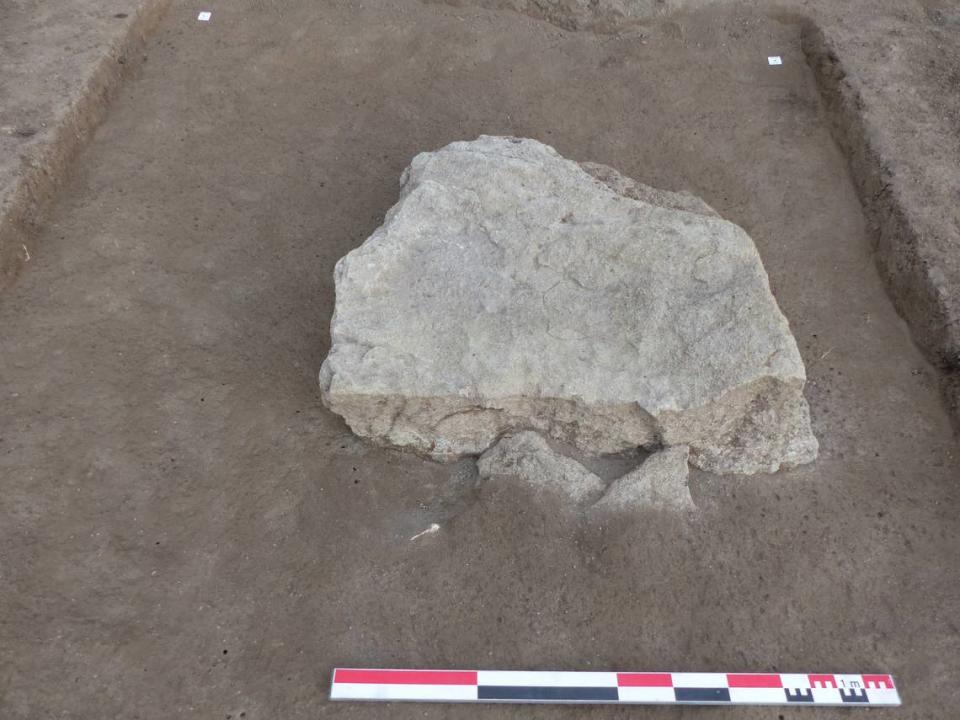
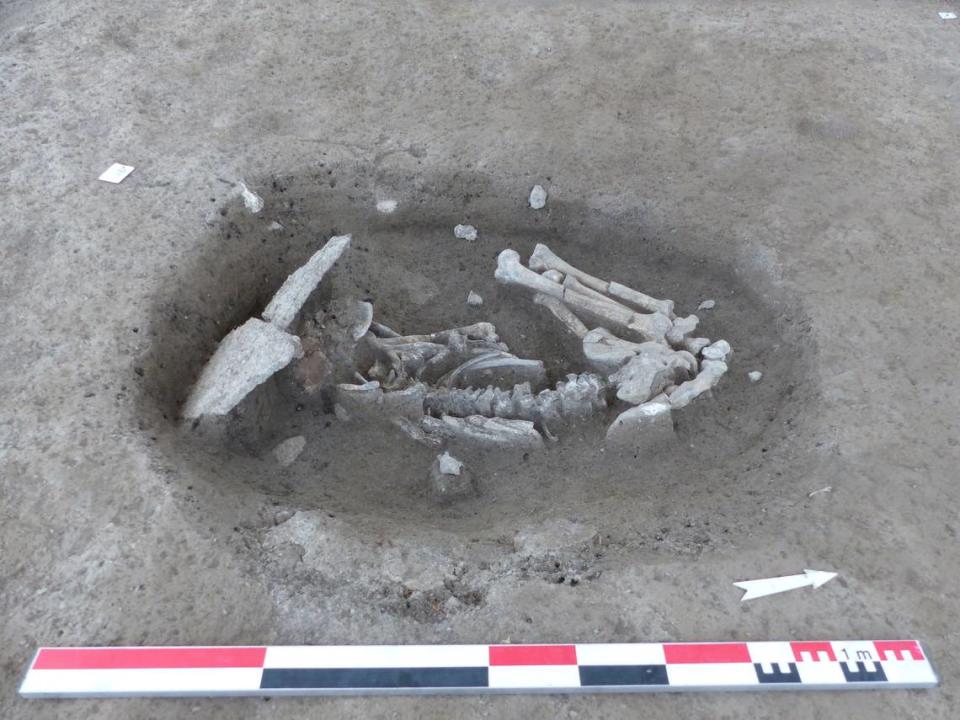
A similar grave dating to around the same time contained two chambers: Each of the chambers held the remains of a young person without any offerings, according to experts.
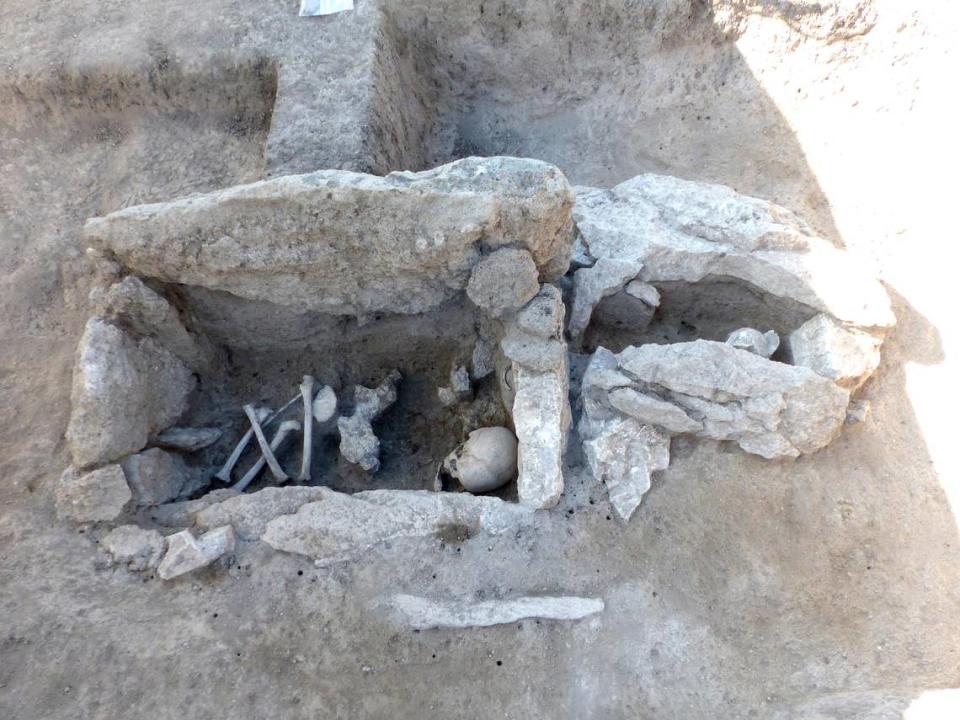
Another unique stone burial held the remains of three individuals buried at different times, archaeologists said. The structure itself and the earliest burial date to between 4344 B.C. and 4061 B.C.
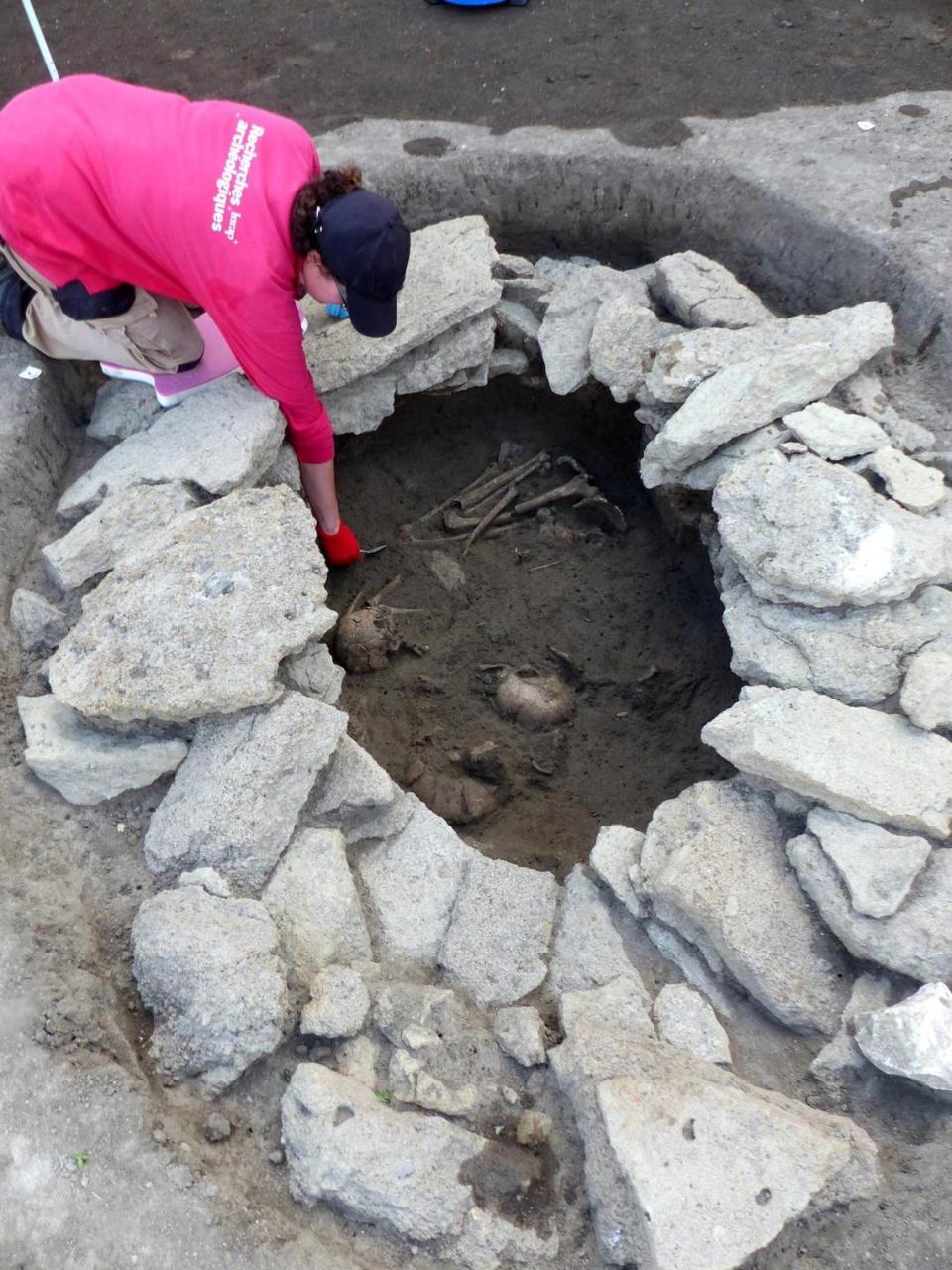
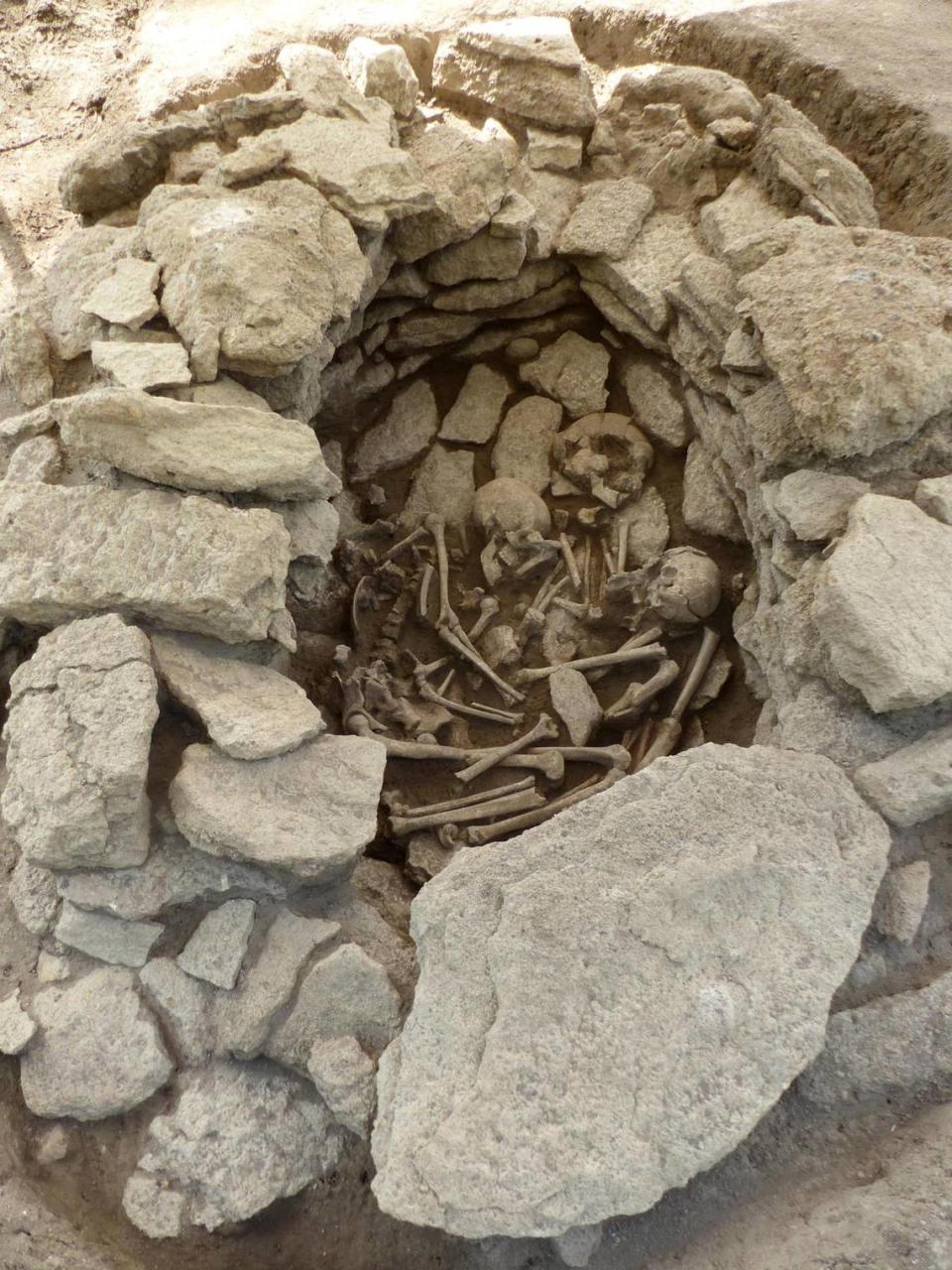
Ancient cremation burials
The site also contained an undated large circular enclosure that held cremation deposits, according to experts.
Inside a limestone chest, archaeologists found two containers filled with the cremated remains of two individuals. The vases were closed with other upturned containers.
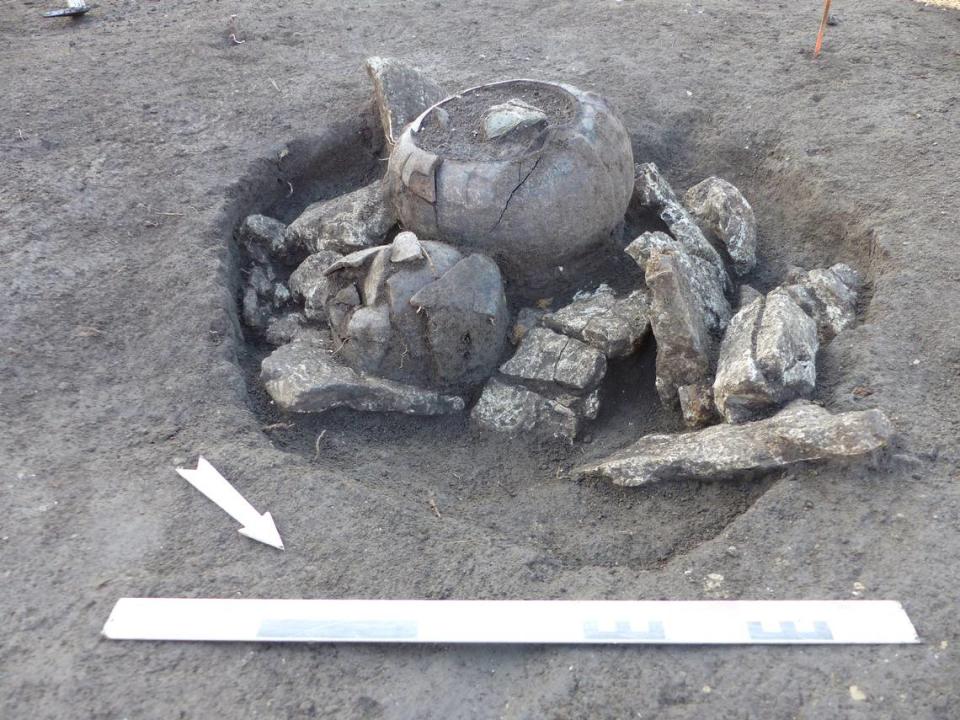
The largest urn was a spherical container with distinct decorations. Experts said the design resembles similar artifacts found in Switzerland.
Some of the urns were struck by an ax as a form of sacrifice, according to archaeologists.
Other unique discoveries
Between the end of the third millennium B.C. and the start of the second millennium B.C., ancient people established a new burial area at the site, officials said.
This area held a number of silo burials, experts said.
One of the silos was marked by two granite millstones. Inside, archaeologists found the remains of three humans buried atop the remains of sacrificed cattle.
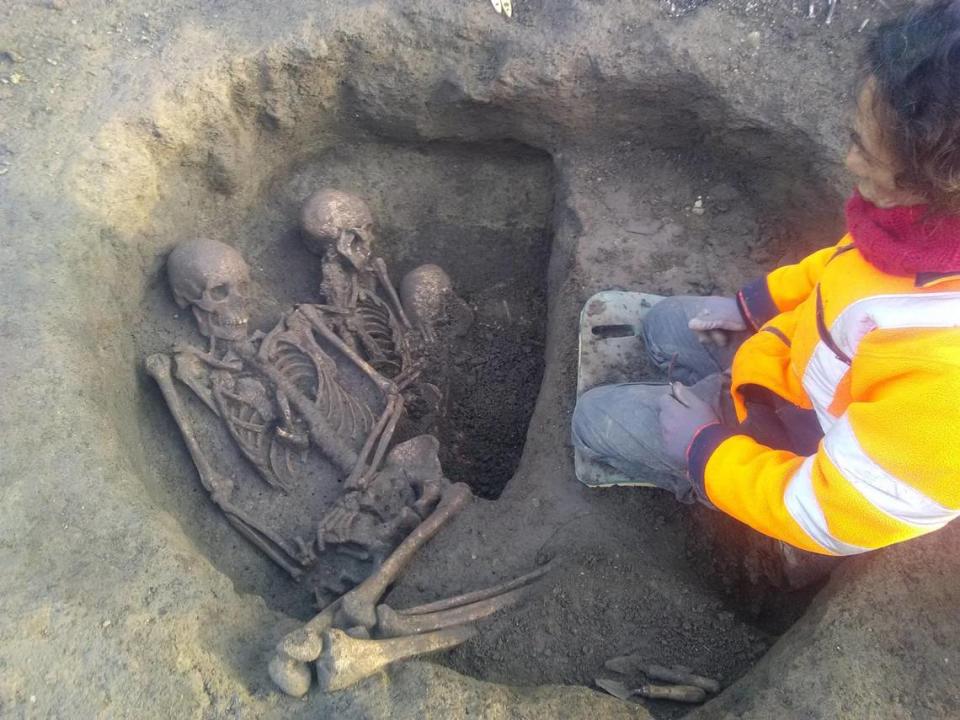
Two of the deceased humans were buried together, while the third was added at a later date.
In one of the skeletons, archaeologists found an arrowhead lodged in the pelvis area, which could indicate the person’s cause of death.
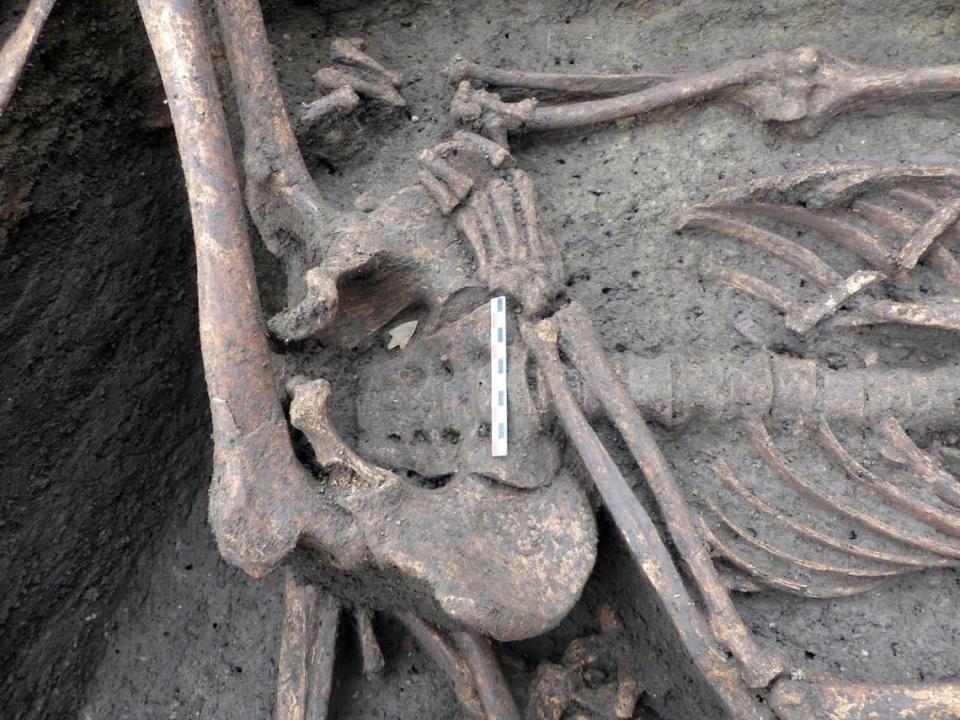
In another part of the site, a deliberately broken and possibly burned ax was found near one of the unearthed enclosures, officials said.
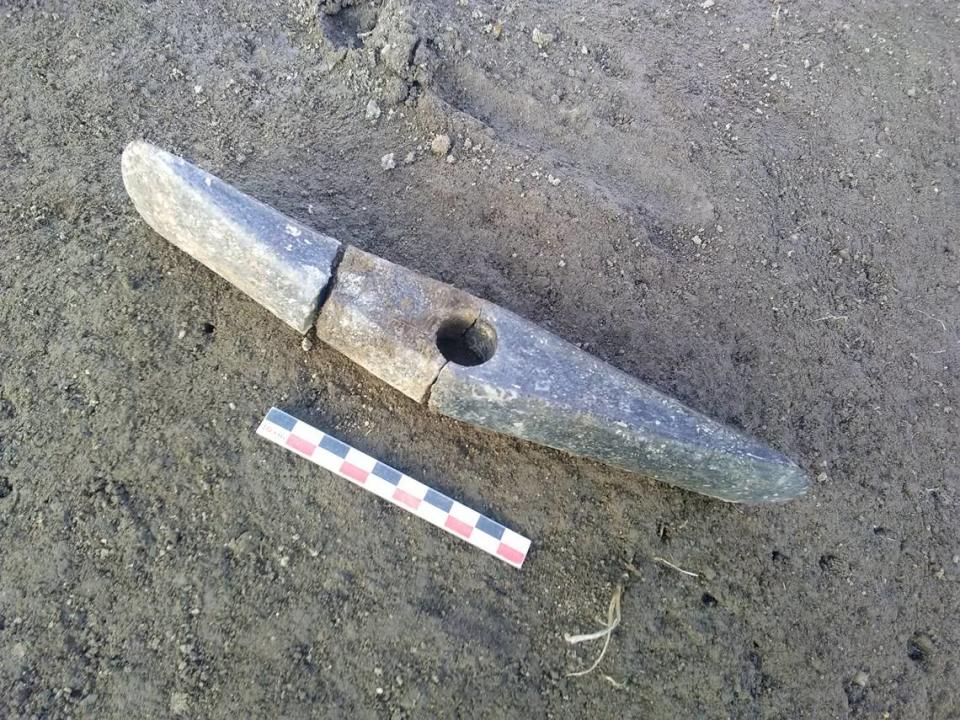
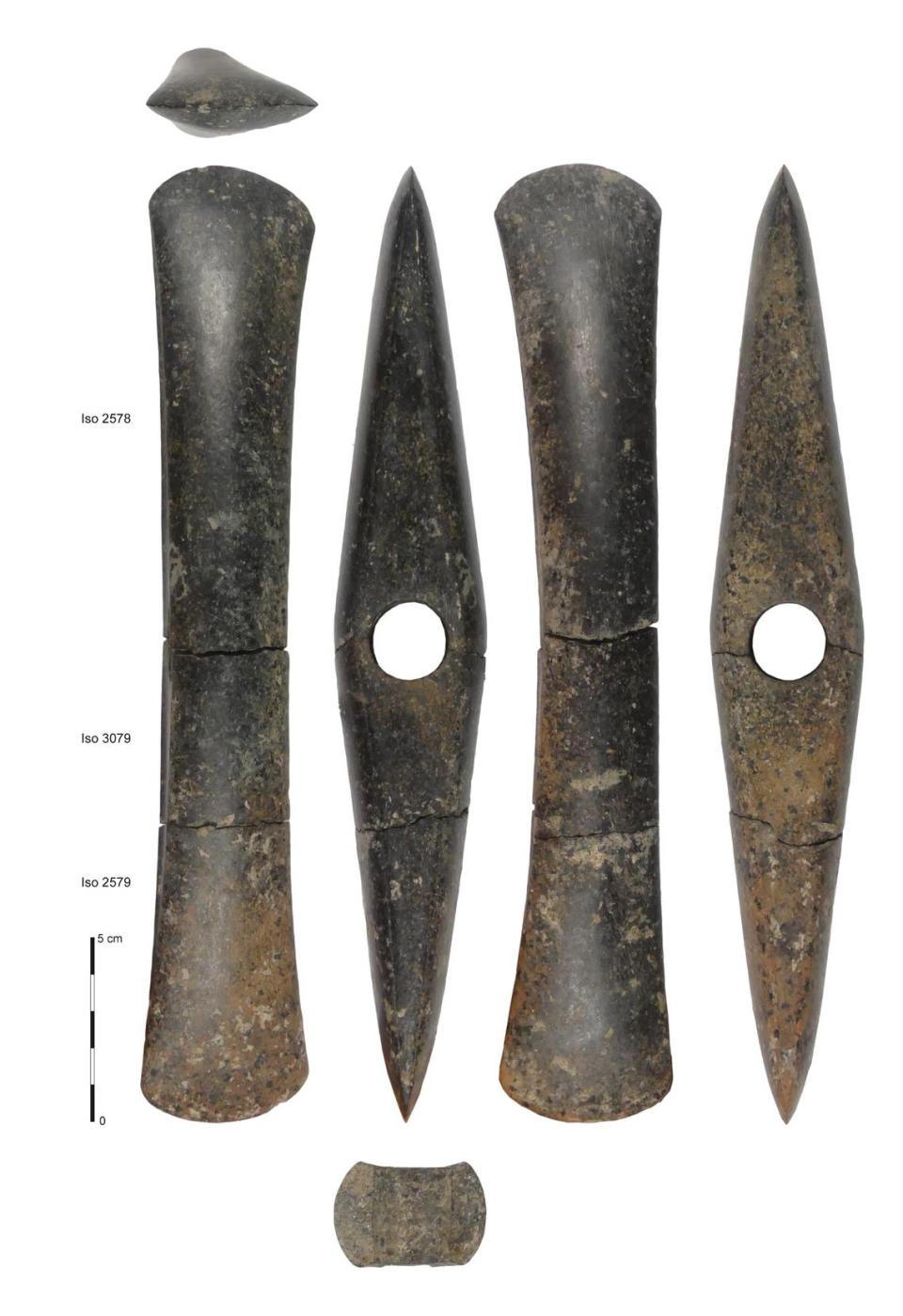
Archaeologists said the tool, although found in three pieces, exhibited exceptional workmanship. The age of the tool is unknown, but it likely dates to around the first half of the fourth millennium.
Google translate was used to translate a news release from INRAP.
Jewelry-laden woman was buried 1,600 years ago. Her astonishing burial was just found
700-year-old church — teeming with rare religious artifacts — discovered. See finds
Construction worker digs up ‘big stone.’ It was a ‘mysterious’ 1,800-year-old statue

